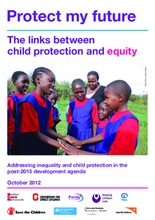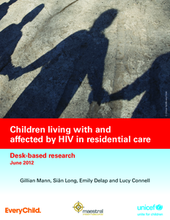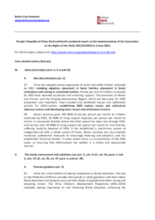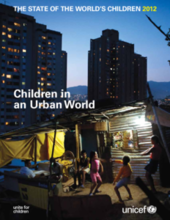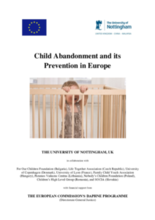Displaying 181 - 190 of 414
The lack of care and protection facing children is a global crisis with billions of children experiencing abuse, neglect or exploitation, and many millions growing up outside of families, on the streets or in harmful institutional care. This lack of adequate care and protection is commonly the result of inequalities. Children without adequate care and protection are stigmatized and have inequitable access to basic services which, severely diminishes life chances and creates a spiral of disadvantage. In order to break this spiral, the authors of this report recommend a three-pronged strategy.
This guide provides step-by-step guidance and recommendations on how to identify and address gender-related issues that negatively affect vulnerable boys and girls in the local program context. It is intended to be a practical tool for staff involved in the design, implementation, monitoring and evaluation of care and support programs for vulnerable children. It provides directions and recommendations for programs to identify and address gender-related issues that negatively affect vulnerable boys and girls in the local program context.
Research was conducted in five Rift Valley towns in Kenya in 2011 to understand the link between emergencies and the perceived increase of children joining the streets. Findings show that emergencies such as Post Election Violence and drought have caused children to join the streets. By far the biggest reason for children joining the streets was food insecurity. The authors advocate for an urgent, large-scale response to place children currently connected to the streets in durable situations in tandem with a multi-sectorial development approach to tackle and address the root of the crisis.
Desk review of existing literature and research to track the extent to which the HIV pandemic has been a driver of growth in children’s residential care and the situation of HIV affected children in care.
The People’s Republic of China issued its third and fourth combined report on the implementation of the Convention on the Rights of the Child in June 2012. This extract of the report focuses on sections relevant to children's care and in particular those addressing Family Environment and Alternative Care
The paper argues that investing in Malawi’s emerging national child protection system will support national social protection goals. The Government is bringing together its various responses to child protection and orphans and vulnerable children as the foundation on which to build the national child protection system, with the intention of delivering a coordinated, harmonised and systematic approach to protecting children from violence, abuse, exploitation and neglect.
This report provides data on children living in urban settings, including statistics, conditions, and personal testimonies. The report also includes UNICEF’s recommendations for policy regarding children in urban settings, working with this population, and for future action. Sections that are relevant to children’s care include: children living and working on the streets, migrant children, urban emergencies, and many more.
This comprehensive manual provides an overview of child abandonment and its prevention in Europe, exploring the extent of child abandonment, possible reasons behind this phenomenon, the consequences of abandonment, and good practices in terms of prevention. For the purposes of the EU Daphne-funded project, child abandonment is defined in two ways, namely open and secret abandonment. Country specific in-depth reviews of child abandonment and its prevention are provided for 10 countries and results from an EU-wide survey analyzed.
The Essential Package (EP) is a comprehensive set of tools and guides for policy makers, program managers and service providers to address the unique needs and competencies of young children, particularly those affected or infected by HIV/AIDS, in an integrated and holistic way. The work that has been conducted to date encourages service providers to consider the holistic needs of children according to their ages and stage of development as well as cultural context and resources available within their community.
This report, produced by the Joint United Nations Programme on HIV/AIDS provides an update on the global AIDS epidemic as well as information on HIV prevention and treatment, HIV/AIDS as it relates to human rights and gender, HIV investments, HIV/AIDS estimates and data, and country progress indicators and data.

